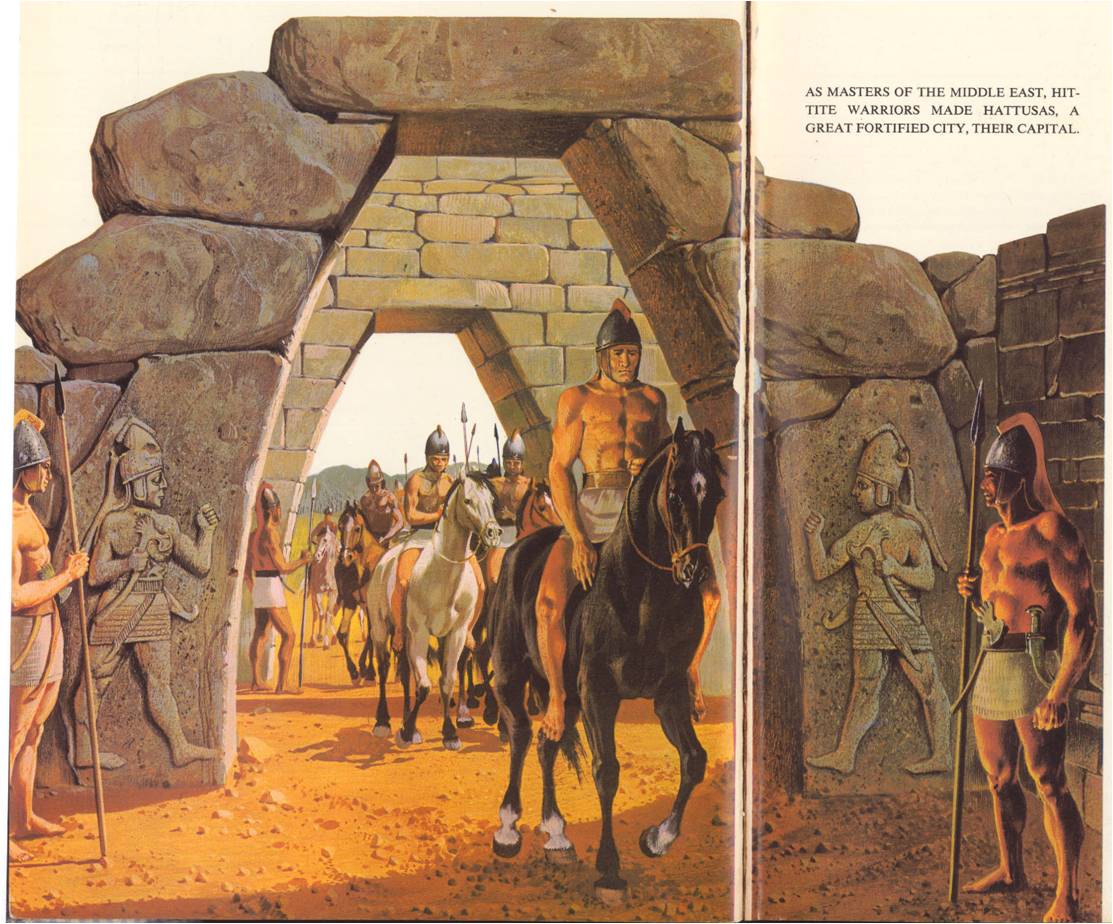It was around 3500 B.C. and as it did every year around the middle of July, the Nile had begun to rise. Carrying tons of soil, the waters poured down from the mountains of Africa, where the rain and melting snow fed the streams that surfed northward into one great river. Wherever it ran free of the rocky canyons, the river overflowed onto the dry fields along its banks. It lapped against the villages on high ground and spread to market towns on the edges of the dessert. Moving northward, the river engulfed the entire Delta region and then emptied into the Mediterranean Sea. By mid-November the waters receded, leaving a thick, dark mud on the fields and in the canals. Near one of the largest towns far up the Nile, the farmers stood waiting at the edge of the fields. Then from the town came the king, followed by guards, priests and servants carrying large fans. The king wore a high white crown and carried a hoe. Scooping some fresh mud out of an irrigation ditch, he placed it in a basket held by an attendant. While the priests chanted, the mud was spread over the field. Now the farmers could plant in the fertile earth left by the floodwaters. The king, who was responsible for the well-being of his people, had performed a great duty. As his white crown indicated, this king ruled only in Upper Egypt. In the Delta to the North there was another king, who wore a red crown. For many years the people of Lower and Upper Delta had been fighting and raiding each other’s towns. However, they all had common ancestors who had come from Africa to the south, from Libya to the west and from Asia to the north and east. Through …
Read More »Hittite Warriors Build a Kingdom 1750 B. C. – 700 B. C.
Within 150 years of the death of Hammurabi, the cities of Mesopotamia were powerless and other peoples took up the struggle for the Near Eastern world. Among them were the Hittites, who had taken the city of Babylon. The rough Hittite tribesman hardly knew what to do with such a splendid city, let alone with an empire, so they went back to their strongholds in the highland plains of central Turkey. They had been living there for several centuries, ever since they had left their homeland in the steppes of central Asia. When the Hittites first moved into Turkey, they had found a land of peasants and small city-states unable to unite in resistance. The Hittites allowed the people to keep their own gods and languages, recruited officials to manage affairs and left the farmers and craftsmen to their work. It was a bleak, rocky land, hot and dry in summer, cold and windswept in winter but, there were grains and cattle and the people made beer and wine and kept bees for honey. The land was rich in metal ores, too. Later the Hittites were among the first to use iron. The Hittites set themselves over the native peoples as an aristocratic warrior class. For many years, rival Hittite tribes and chieftains fought among themselves before Labarnas established himself as the first true king. He led the Hittites in expanding their power throughout Turkey and his son Hattusilis I, extended it to Syria. Hattusilis made the city of Hattusas his capital. It was strategically located near the crossroads of the main trade routes in central Turkey. As his reign neared its end, Hattusilis could take pride in the kingdom he was leaving to his people, but he had one unpleasant task to perform. He had raised his nephew as …
Read More »

